











Hon’ble Members,
To bhartendu.singh@gov.in
Cc andas.cgda@nic.in
maushumirudra.cgda@nic.in
Bcc dastidarsg@nic.in
defsecy@nic.in
Lt Col RK Bhardwaj (Retd)
PS
Appointments of the above referred Officers are –
Sh S G Dastidar
CGDA
dastidarsg@nic.in
Sh A N Das
Sr Jt CGDA (SPARSH Coord)
andas.cgda@nic.in
Smt Maushumi Rudra
Sr Jt CGDA (SPARSH Grievance)
maushumirudra.cgda@nic.in
Dr Bhartendu Kumar Singh
Jt CGDA (Pension/ SPARSH Grievance)
bhartendu.singh@gov.in
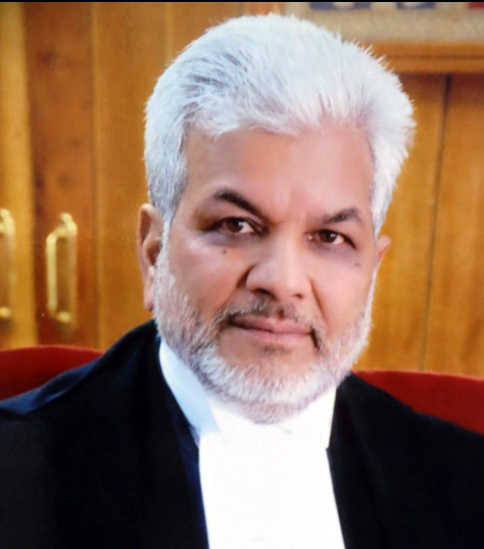
Chandigarh, September 25

Justice Dharam Chand Chaudhary, the senior-most Judicial Member-cum-Head of Department of the Chandigarh Bench, of the Armed Forces Tribunal (AFT), has been transferred to the Kolkata Bench with immediate effect.
Justice Chaudhary, who was the Acting Chief Justice of Himachal Pradesh High Court before being appointed to the Tribunal, had joined the Chandigarh Bench in September 2021.
According to orders issued by the AFT Chairperson on Monday, the transfer is “for administrative reasons in public interest,” sources privy to the development said.
The Chandigarh Bench has jurisdiction over thestates of Punjab, Haryana, Himachal Pradeshand the UT of Chandigarh, with thousands of cases, mostly pertaining to disability benefits and service matters pending before it.
The sudden move to transfer Justice Chaudhary has prompted the AFT Chandigarh Bench Bar Association to write to the Chief Justice of India, averring that it is a direct assault on the independence of the judiciary because strict orders were being passed against senior Government officials for non-implementations of AFT judgments.
Referring to an earlier letter written to the Chief Justice by the Bar alleging interference in judicial matters by the Defence Secretary by way of seeking a report and analysis of orders passed by the Tribunal, Chaudhary, the letter states that Justice Chaudhary has been moved out because he refused to buckle under pressure from the Ministry of Defence (MoD).
Stating that the MoD is a compulsive litigant in all cases before the AFT and is also known not to implement judicial orders passed against it, the Bar has urged the Chief Justice to take action in the matter by treating this letter as a petition and quashing the said transfer which is a “colourable exercise of power” and by removing the AFT immediately from the control of the MoD so that the confidence of litigants and the legal fraternity is not threatened.
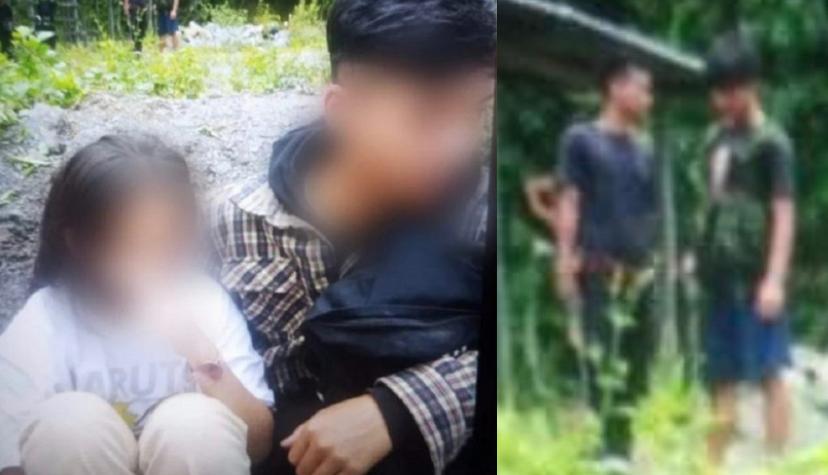
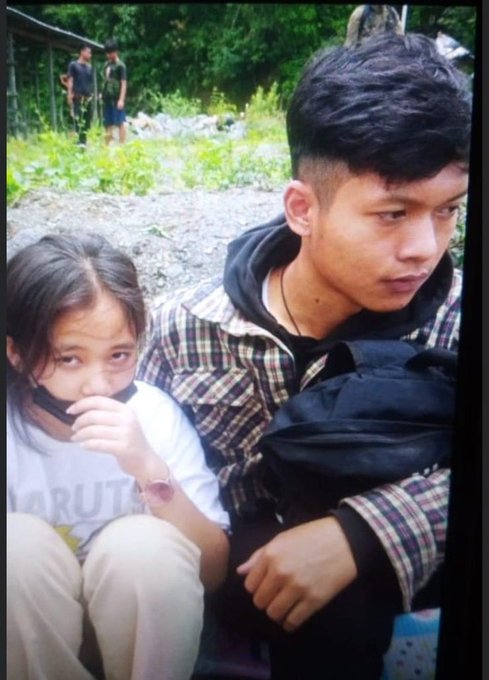
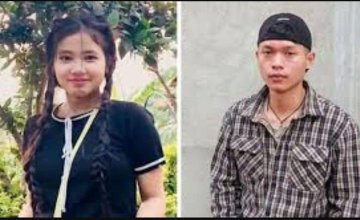
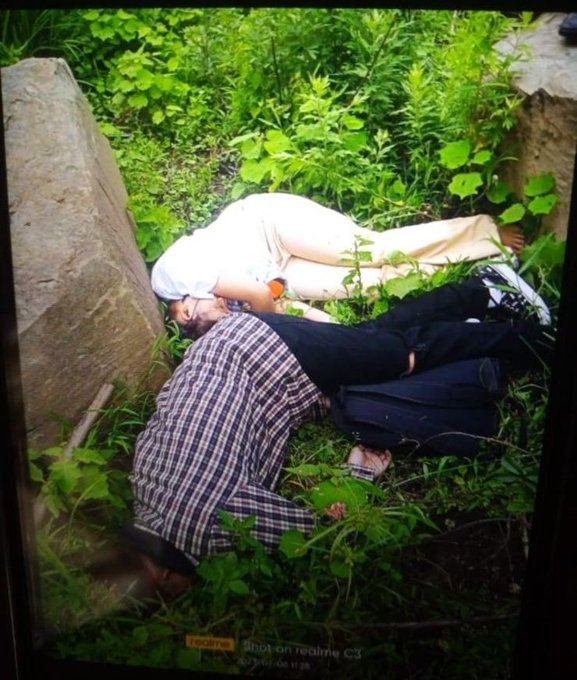
Chandigarh, September 26
Two students who went missing on July 6 from Manipur during the peak of ethnic violence in the state are suspected to have been “killed”.
Pictures of the two missing students have surfaced on social media, soon after the Internet services were restored in the state.
The government has confirmed that the bodies belonged to the two students.
The photos show the two students – Hijam Linthoingambi, 17; and Phijam Hemjit, 20; sitting on grass and behind them in the picture are two armed men.

The photo appears to be of a camp in a forest. Linthoingambi is seen wearing a white t-shirt and Hemjit, next to her, is in a white black and brown check shirt.
Another photo, which has surfaced online is of their bodies.
“The case is already being investigated by the CBI,” the Manipur chief minister’s office has said.
Both students belonged to the Meitei community.
According to the timeline, the pictures were taken on July 8, two days after they had gone missing.
Students of Imphal-based schools, colleges brought out protest rallies after photos of bodies of two youths went viral on social media
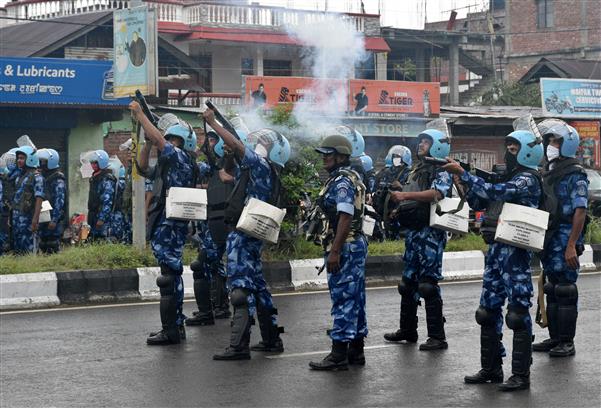
PTI
Imphal, September 26
More than 45 students, mostly girls, were injured in Manipur’s Imphal Valley on Tuesday as the police fired tear gas shells and baton-charged a mob protesting against the killing of two youths who were allegedly kidnapped in July, officials said.
The students of Imphal-based schools and colleges brought out the protest rallies hours after photos of the bodies of the two youths went viral on social media, demanding arrest of those involved in the killing.
The protesters clashed with the police near Sanjenthong in Imphal East district when security forces stopped them from advancing towards the chief minister’s secretariat here.
The police used tear gas shells and batons to disperse the agitators.
“School and college students took out a rally in Imphal to protest against the killing of the two youths. As the students were heading towards the CM’s Secretariat, security personnel took action to disperse them,” a police officer said.
Over 30 students were injured in police action and admitted to three hospitals in Imphal, officials of the medical facilities said.
Photos of the bodies of the missing students surfaced on social media on Monday, following which the Manipur government has asked people to exercise restraint and allow authorities to investigate the “kidnapping and killing” of the two.
The two youths were identified as Phijam Hemjit (20) and Hijam Linthoingambi (17).
Students also took out rallies at Uripok, Old Lambulane, Singjamei in Imphal West district demanding arrest of those involved in the killing of the two youths.
Similar clashes between students and security forces have been reported from Thoubal, Kakching and Bishnupur districts.
Abungo Th, a student who participated in the protest, told the media: “The missing students were killed and the govt is yet to arrest the killers. The location of the bodies where they have been buried is still unknown. The government is reluctant to take action.” In a statement issued by the secretariat of Chief Minister N Biren Singh late on Monday night, the state government said the case has already been handed over to the Central Bureau of Investigation (CBI).
“The state police, in collaboration with the central security agencies, are actively investigating the case to determine the circumstances surrounding their disappearance and to identify the perpetrators who murdered the two students. The security forces have also started the search operation to nab the perpetrators,” the statement said.
Security personnel have been put on alert, and additional measures taken to prevent any incident after the photos of the students have gone viral, a senior officer said.
The government assured people that “swift and decisive action will be taken against all those involved in the kidnapping and killing of Phijam Hemjit and Hijam Linthoingambi”, the statement said.
The government is committed to ensuring justice and will impose severe punishment on any perpetrator found responsible for the heinous crime, it said.
The police had previously said that the whereabouts of the two were not known and their mobile phones were found switched off.
The last location of their handsets was traced at Lamdan near the winter flower tourist spot in the Churachandpur district, they had said earlier.
Manipur has been witnessing ethnic violence since early May.
More than 175 people have been killed and several hundreds injured since ethnic clashes broke out in the northeastern state on May 3, when a ‘Tribal Solidarity March’ was organised in the hill districts to protest against the majority Meitei community’s demand for Scheduled Tribe status.
Meiteis account for about 53 per cent of Manipur’s population and live mostly in the Imphal valley, while tribals, including Nagas and Kukis, constitute 40 per cent and reside mostly in the hill districts.
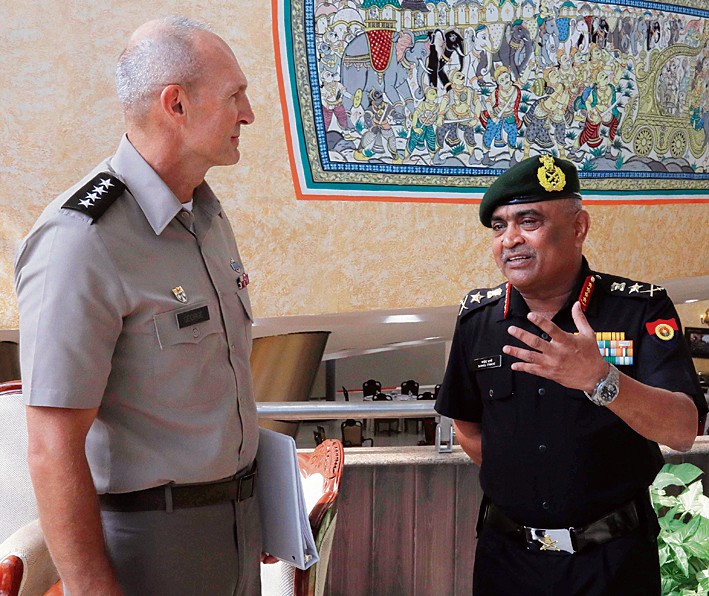
Army Chief Gen Manoj Pande with US counterpart Gen Randy George.
https://cdn.vuukle.com/widgets/audio.html?version=1.2.0
Advertisement
Ajay Banerjee
New Delhi, September 26
India and the US have jointly kicked off a 30-nation conference to collaborate on the interoperability of forces for ensuring a secure Indo-Pacific region.
Meet’s 3-tier agenda
Indian Army Chief General Manoj Pande chaired the opening session along with his US counterpart General Randy George. Asked if the forces could intervene in territorial disputes in the Indo-Pacific, General Pande clarified: “We aren’t looking at forging a military alliance, nor is the event directed against any particular country or a group of nations. We only want an open and sustained dialogue.”
The three-day ‘Indo-Pacific Armies Chiefs’ Conference’ (IPACC) that began yesterday has 20 Army chiefs in attendance. “That’s the most we have ever seen at an IPACC. It’s a big deal. The security architecture binds the region, leading to unity and collective commitment on various fronts,” said General George. The conference’s theme this year is “Together for peace: Sustaining peace and security in the Indo-Pacific region”. The US official said the IPACC was exploring continuous transformation to match the changes in war pattern and striving to maintain a free and open Indo-Pacific.
“We need to ensure our defence industrial bases and supply chains remain in good health. Training and joint drills are a must too.
To fight together in the future, we will need a simpler way of interacting with each other on the battlefield. Emerging technologies can help us do that,” the US General said. To a media query, he said the India-US partnership was vital for the region’s stability and “our relationship is growing stronger”.
General Pande opined that the Indo-Pacific construct had come to occupy central space in contemporary geo-strategic canvas. “It is a theatre of complexities and challenges. A periodic ideation, discussion and collaborative congregation of all partners is mandated,” he said, laying down a three-tier agenda for the next two days.
New Delhi, September 26
India’s outlook for the Indo-Pacific emphasises respect for sovereignty and territorial integrity of all states in the region, peaceful resolution of disputes and avoidance of use of force, Army Chief Gen Manoj Pande said on Tuesday.
His comments at the inaugural session of the India-hosted 13th Indo-Pacific Armies Chiefs’ Conference (IPACC) came against the backdrop of China’s growing military assertiveness in the Indo-Pacific as well as the lingering border row in eastern Ladakh.
“The challenges we face are significant, but so is our collective wisdom and strength. It is through open dialogue and exchange of ideas that we will find innovative solutions to the challenges,” he said in presence of military delegates from around 35 countries.
“Let us recognise that while our methods and means towards achieving our objectives may differ, yet our goal is the same, that is, a free and open Indo-Pacific,” he added.
Highlighting the geo-political significance and geo-economic weight of the Indo-Pacific nations, Gen Pande said it is evident from the fact that the region accounts for 65 per cent of the world’s population, 63 per cent of the global GDP and 50 per cent of the world’s maritime trade.
“Hence, the impact of geographic and economic indispensability of the region to the world, naturally accords it the role of the pivotal theatre in the contemporary geo-strategic canvas,” he said.
The chief of Army Staff said India’s commitment towards “positively engaging” all stakeholders in the Indo-Pacific has been “unwavering and enduring” over the years.
“India’s strategic location, astride the vital sea lanes of communication, in the Indo-Pacific, propels us as a key player in the region’s discourse,” he said.
“Our outlook emphasises respect for sovereignty and territorial integrity of all nations in the region, equality of all, peaceful resolution of disputes, avoidance of use of force and adherence to international laws, rules and regulations,” he said.
Chief of Staff of the US Army General Randy George and several chiefs of armies were among the delegates at the two-day conference. The US Army is the co-host of the conference.
India also showcased some of its indigenously-developed military platforms at an exhibition that has been organised as part of the conference.
“While efforts by countries are converging towards effecting a free and stable Indo-Pacific, yet we are witnessing manifestations of inter-state contestations and competitions,” Gen Pande observed.
“The challenges we face transcend across borders, and our response to them must factor this. The Indo-Pacific region is not merely a collection of nations — it is a web of interdependencies,” he said.
“We are bound by geography, and our destinies are intertwined. The security and prosperity of one nation is intrinsically linked to the security and prosperity of its neighbours, and much beyond. Therefore, each one of us has an important and a pivotal role to play,” he said.
Gen Pande pitched for greater cooperation in the spheres of security, connectivity and economy among the littoral states in the Indo-Pacific region.
“From a definitional perspective, the construct of ‘Indo-Pacific’ largely hints at primacy of navies, in the security stakeholdership of the region,” he noted.
“While there is no denying this, the role of other components of armed forces remains profoundly relevant. Apart from challenges exclusively in the maritime domain, a wide range of security and humanitarian concerns exist on land, too,” he said.
“These range from territorial disputes over land masses, or in some cases even over artificially expanded islands to acquire real estate and establish military bases, transnational threats of terrorism, consequences of climate change impacting the inhabited islands or coastal areas of rim nations and natural calamities,” he added.
Gen Pande observed that these challenges are manifesting as “threats, singularly or plurally, impacting one or more nations amongst us”.
He said cooperation amongst the land forces, hence, is a critical component of the collective response.
“Though bilateral and multilateral engagements between components of armed forces of our nations have been ongoing, this forum provides a collective platform to share perspectives, comprehend unique manifestations, identify priorities, and aggregate our response methodology,” he said.
Ahead of the inaugural session of the conclave, Gen Pande said at a media briefing that the Indo-Pacific construct has come to occupy central space in contemporary “geo-strategic canvas”.
“Its significance is a reflection of the evolving dynamics in the political, security, economic and environmental domains of today’s world,” he said.
“The region is not only a cauldron of cultures, histories, resources and opportunities, but is also a theatre of complexities and challenges. The percentage of the global population residing in the region,” he said.
The Army chief said the region’s share in the global GDP, its share in merchandise market and maritime trade lend this region a pivotal stature in charting the world’s course in the 21st century.
The IPACC, instituted as a biennial event in 1999, is attended by Army chiefs of countries of the Indo-Pacific region, to discuss issues of mutual interest.
PMOPG/ E/2023/0189443 DATED 21/09/2023 – SPARSH FUNCTIONING : CATASTROPHIC FAILURE – EX-SERVICEMEN (SENIOR/ SUPER SENIOR CITIZENS)/ SINGLE LADIES PENSIONERS IN TOTAL PANIC 1 message Rk Bhardwaj Mon, 25 Sept, 2023 at 8:36 am
To: webmaster Cc: agbrancharmyhq ,
Col Nitin Sharma Director MP 5 (b) Bcc: defsecy@nic.in URGENT
Lt Col RK Bhardwaj 158/20, Officers Colony (Retd) Rajpur Road Mob – 9219603039 Dehradun – 248009 33886/Sigs 25 Sep 23 Gen Manoj Pande, PVSM, AVSM, VSM, ADC Chief of Army Staff IHQ, New Delhi PMOPG/E/2023/0189443 DATED 21/09/2023 – SPARSH FUNCTIONING : CATASTROPHIC FAILURE – EX-SERVICEMEN (SENIOR/ SUPER SENIOR CITIZENS)/ SINGLE LADIES PENSIONERS IN TOTAL PANIC Sir, 1. Please refer our – (a). E-mail dated 20 Sep 23, Copy enclosed. (b). PMOPG/ E/2023/0189443 dt 21/09/2023, Copy enclosed. 2. Vide above ref Grievance/ E-mail, I on behalf of all the Ex-Servicemen has lodged the Grievance in PMOPG Portal addressed to Hon’ble Prime Minister Sh Narendra Modi Jee and fwd the E-mail addressed to CGDA, Def Secy MoD & Secy ESW. We have submitted the difficulties being faced by all the Ex-Servicemen & Single Ladies Pensioners in Operating the SPARSH Portal after Migration. The Grievance has been fwd by Min of Def to IHQ, Dir MP 5 & 6 AG’S Branch on 22 Sep 23. Copy of the same is pasted below for your ready reference please – Registration Number : PMOPG/E/2023/0189443 KIND ATTENTION HONOURABLE PRIME MINISTER SH NARENDRA MODI JEE SPARSH FUNCTIONING – CATASTROPHIC FAILURE – EX SERVICEMEN/ SINGLE LADIES PENSIONERS IN TOTAL PANIC 1. SPARSH has been introduced in the Indian Armed Forces for the Betterment and Ease in Functioning by the Ex Servicemen Pensioners in payment of their Pensions. 2. Service Pensioners and Single Ladies are of Age 40-100 years plus, Education Class 5 to Masters, belonging to different Areas and of different Mother Tongues. All Pensioners are not Computer/Smart phones SAVVY. 3. Till now all Pensioners Data was correctly held by PCDA Pensions. No problems were being faced by Pensioners or PCDA Pensions. Why on Migration to SPARSH, so many mistakes are observed. Important Data, Spouse LIVING are shown NOT ALIVE and vice versa. NAMES OF SPOUSES are SHOWN WRONG.In Spite of ePPOs having Spouses Date of Birth, are Not Shown OR Shown Incorrectly in SPARSH Personal Data & SPARSH PPOs. 4. PPOs, Corr PPOs and ePPO of all Pensioners are held with PCDA Pensions. Why so many mistakes are observed in SPARSH Portal & PPOs by majority of Pensioners.It can only happen, if transfer of Data was done with lackadaisical attitude and in a hurry. 5. It is the duty of PCDA Pensions to Transfer the Data to SPARSH Portal.Recheck and Correct it if required, since Complete Data of Pensioners is already held with them.It is not understood why Pensioners are asked to Update the Data after Verification from Records Offices. 6. Sir, we the ESM Request your good office, that Advise be given to Secy Min of Def to Instruct the CGDA/PCDA Pensions SPARSH, that Data of All Pensioners be Transferred, Uploaded and Updated in the SPARSH Portal by their Staff itself.The Pensioners be Not asked to do the same. Once the Verified Data is available with them, why to make the Life of Pensioners difficult besides making Service HQs, Records Offices/ IHQ (MP-5 b), PCDA (O) and PAOs (OR) hard pressed by increasing their workload for Verification of Pensioners Data. ————————————————- 3. Sir, the problems start immediately after migration to SPARSH. In most of the cases Mobile No of Pensioners have not been transferred on SPARSH, thus login ID & Password for SPARSH are not received by the Pensioners. Some of the Pensioners are waiting for 6 months or more for the same. The Aadhaar & PAN Number linked and available with PCDA Pensions in LPC-CUM-DATA-SHEET, have not been transferred on the SPARSH page of most of the Pensioners. In the absence of Aadhaar, Demographic failure OCCURS & Pensioners can’t proceed further after Login. If they are lucky to proceed, difficulty to Submit the Mandatory Declaration is faced due to some technical glitches in the SPARSH Software. 4. Sir, the Complete Personal, Service & Family Data of the Pensioners are available in LPC-CUM-DATA-SHEET (Held with PCDA Pensions). The same have either Not been transferred OR transferred WRONGLY on SPARSH page of the Pensioners by them. In Spite of their Mistake & Not Correcting the same, the Pensioners have been asked to Update/ Correct their Data on their respective SPARSH page. For Each Update/ Correction, the Service Request (SR) is registered. It has to be approved by ORO (MP 5 b)/ Respective Records Offices, before finally Accepted by the SPARSH System. Till the Pending SR is not Processed, New SR can’t be Registered. At times Pensioners have to wait for 3 – 6 months or even more to Update/ Correct their Remaining Data. Grievance can only be filed after 30 days from Registration of SR. No Advisory OR User Guidelines (How to Fill the Missing Data) for the Pensioners have been issued by the PCDA Pensions SPARSH. What Actions OR Whom to Contact, in case of Delay in Verification of Updated Data. Infact for the Data already held with PCDA Pensions, No Verification should have been required to Save the time.These can be posted in the SPARSH Portal. Few Data asked for, like Spouse PPO No (Mandatory) is not known to all the Pensioners. Irrelevant Supporting Documents are being asked to be uploaded, like Joining Order for Corps/ Branch & Citizenship proof for Nationality. 5. Processing of the SR takes 10 days to Number of Months in certain cases. Few Single Ladies have Not been able to Upload the Death Certificates of their Late Husbands for months to Report the Death & Initiate the Family Pension. Pity is, the same is Not Accepted By Hand/ Post. With the result they are unable to get their Family Pension. With the present System, it would take few Years for Lakhs of Pensioners to get All their Data Corrected. Till then they would keep Suffering & Cursing the SPARSH, since they are finding themselves Helpless. Some of these problems being faced have also been forwarded to CGDA with copy to Defence Secretary & Secretary ESW in the e-mail referred at Para – 1(a) above (Ref Para -7 of the email). The same are however Pasted below for your ready Reference please – (a). Non receipt of login id & password. (b). While login Demographic failure. (c). Non Submission of Declaration/ Ack. (d). Basic information Aadhaar, PAN, Mobile Not found Entered in Personal Details. (e). Difficulty in Update of Personal Details. Upload of Documents (Asked for are un[1]Warranted or Not Available). (f). Non attendance of Service Request Raised. Who are these agencies & can they be Contacted to request for expedite & how ? (g). Who is to be Contacted if Service Request Not attended for days & months. (h). If the Service Request Not Processed & is Pending, another Service Request can’t be Raised. It requires a relook. It is harassment. (j). TDS not being Deducted. If deducted not Seen in Form 26 AS, though shown in Form – 16. Thus making filing ITR Intime impossible. (k). NRIs living abroad Not permitted to login due to Geo-fencing. How does CGDA expect them to function ? Perforce NRIs are made to Use VPN. Aadhaar is not obligatory for them. But without Aadhaar they can’t login. Besides having difficulty in submission of Life Cert on line. 6. Sir, the Complete Data of each Pensioner is already held with PCDA Pensions in LPC-CUM-DATA-SHEET along with Copies of All the PPOs & Corr PPOs generated by them. That is why, for So Many Years, No problems were ever faced by the Pensioners or PCDA Pensions, BEFORE Migration to SPARSH. It is the duty of the PCDA Pensions to Transfer the Data Correctly to SPARSH, since it affects the Financial transactions. We presume, due to heavy workload and to Meet the Target Date, they failed to transfer the Data Correctly to SPARSH. Therefore majority of the Pensioners SPARSH pages are having a Number of mistakes or few Data Fields are found blank. To avoid their Duty/Work for Correcting the same, PCDA Pensions SPARSH Staff are forcing the Pensioners to Update to Correct the wrong Data/ Fill the Blank Fields (Mistakes done by PCDA Pensions). The SPARSH system has yet not been stabilized, due to the Reasons best known to them & is having Number of Technical glitches. Therefore is Not working Satisfactorily. The System/ Practice being followed by PCDA Pensions SPARSH for getting the Data Updated/ Corrected/ Filled in Blank Fields, is NOT ONLY PUTTING THE PENSIONERS TO TROUBLE, But is also Increasing the Workload of ORO (MP 5 b), PCDA (Officers) & All the Records Offices as well. Since these Offices have to Verify the Data before giving Approval to Each Data Update/ Corrections/ Filled, by the Pensioners. Only after Approval the Data is Corrected/ Updated in SPARSH Portal. 7. Sir, the difficulties being faced are not only applicable to me but to all the Ex-Servicemen and Single Ladies Pensioners. I therefore on behalf of all of them, would request your good office (Head of the Org), to Consider Our above stated Submissions Sympathetically and Advise the Adjutant General, to give the Justified Comments & Recommendations to Change the Policy of Updating the Data by Pensioners. PCDA Pension be asked to undertake the Job of Upload/ Update, Recheck & Correct the Data, if required in SPARSH. Sir, they would take MUCH LESSER time, besides Ensuring the Correct Data Transfer on SPARSH Portal. The Workload of other agencies, e.g. ORO (MP 5 b), all Records Offices & PCDA (Officers) would also Not increase unnecessarily. All the Ex-Servicemen & Single Ladies Pensioners would also be relieved from their Panic & Tension, while Operating the SPARSH Portal. Detailed User guidelines in the layman’s language while working on SPARSH be Posted in SPARSH Portal including Actions to be taken in case of likely difficulties being faced. 8. Sir, keeping the above in view, your Right & Timely Directions would go a long way in having the Perfect System of SPARSH in Place for the Future. It would help all the Present & Future Ex-Servicemen & Single Ladies Pensioners in having their Remaining life Peaceful & Tension free while Operating the SPARSH Portal. We are sure of your blessings in this regard. Warm regards.
Yours Sincerely, Encl : Two.
(Lt Col RK Bhardwaj)
Retired Copy to – Sh Giridhar Aramane, IAS For info please. Defence Secretary PMOPG/E/2023/ South Block 0189443 dt 21/09/23 New Delhi refers.
Lt Gen C Bansi Ponnappa, PVSM, AVSM, VSM Adjutant General IHQ, New Delhi
Col Nitin Sharma. PMOPG/E/2023/ Director MP 5 (b) 0189443 dt 21/9/23 AG’s Branch.
fwd to your Office by IHQ, New Delhi Min of Def on 22/9/2
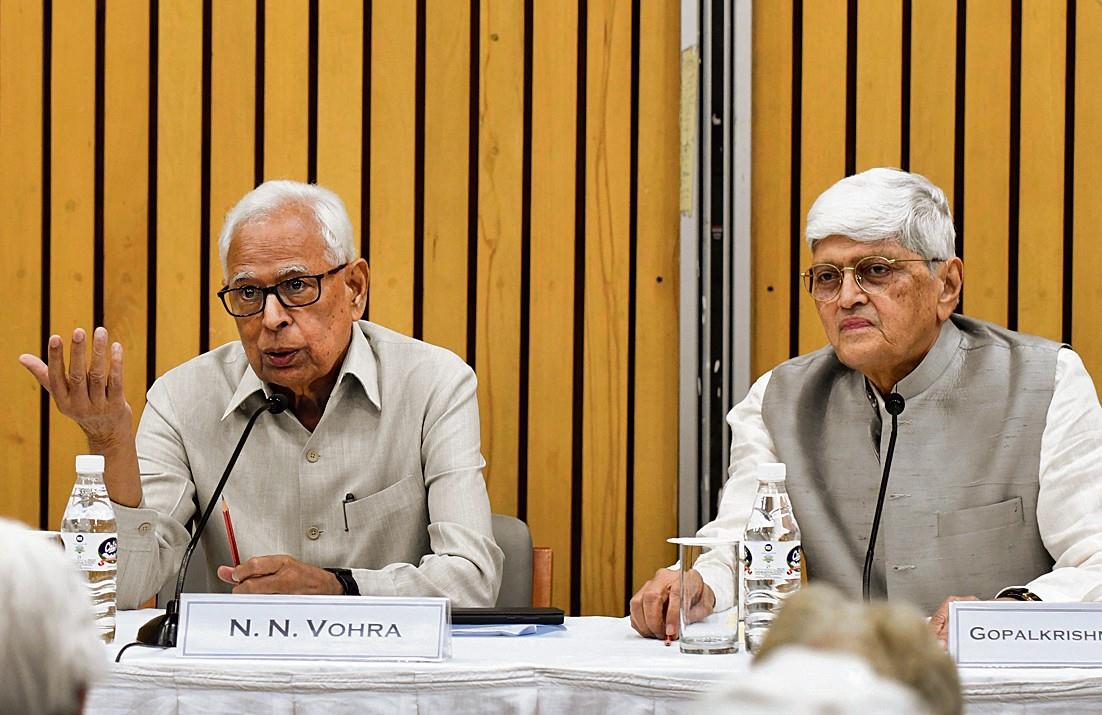
Former president of the India International Centre NN Vohra with former Governor of West Bengal Gopalkrishna Gandhi (right) at an event in New Delhi on Tuesday. MANAS RANJAN BHUI
New Delhi, September 26
Former Jammu and Kashmir Governor NN Vohra on Tuesday made a strong case for urgent removal of constitutional illiteracy from India and warned against any tinkering with the provisions of the Constitution, which, he said, had served the nation well for over 75 years.
Delivering the inaugural lecture in a new series — “The working of the Indian Constitution: Stories and scholarship” — at the India International Centre (IIC), Vohra said it would “instead be beneficial for us to better understand the visionary perspectives and provisions of the Constitution and take every required step to secure closer adherence to its prescriptions”.
“A very high risk is involved in any mindless tinkering with any of the provisions of the Constitution of India that have kept us on track for seven and a half decades,” the former Governor cautioned. Vohra argued that consistent development of a country with a vast population as India’s would depend on sustained delivery of good governance. “For the achievement of this objective, it would be essential that the governance system steers close to the goals contained in our exhaustive Constitution, which we are sometimes in a great rush to discard and modify,” said the former IIC president.
He said adherence to the commands of the Constitution, “except during the Emergency, had kept India together and moving forward”. Vohra lamented the lack of the common man’s exposure to the vision of the Constitution and noted, “This is an unfortunate situation because we are a very large country. It would be immensely beneficial for our present and future if a high percentage of our citizenry was meaningfully aware of provisions of the Constitution.” The former Governor advocated serialising of the Constitution on TV, on the lines of the acclaimed ‘Mahabharata’ series.
He termed as “unfounded” the view that knowledge of the Constitution was the preserve only of lawyers and judges. “Constitutional illiteracy must be removed and all people in the polity must adhere to the constitutional provisions not merely by taking an oath which goes into the file, but also by ensuring constitutional governance,” Vohra said. The former Governor, while listing India’s advancements across the health, economy, food security and diplomacy sectors, said the country still had a very long way to go in beating the challenges of nation-building.
“We need to introduce urgent reforms primarily in the areas of national security, elections, empowerment of women and anti-corruption. Mafia syndicates running with the patronage of the political class must be exterminated at the earliest,” Vohra said, adding he saw no proximate possibility of meaningful reforms unless there was national consensus among political parties.
He noted national problems could be solved by first acknowledging them and then finding a consensus to solve them. The event was presided over by IIC president Shyam Saran. At the conclusion, former West Bengal Governor Gopalkrishna Gandhi quipped, “The Constitution of India was drafted by the honest for the innocent.”

By Group Captain Praveer Purohit (retd)
When Babur embarked upon his endeavour to conquer parts of North India, he was challenged by the then reigning king of the Delhi Sultanate- Ibrahim Lodi. This led to the First Battle of Panipat in 1526. Babur and his army suffered setbacks in the fight and were on the verge of defeat. Two things changed the course of history. First, was Babur’s leadership wherein he motivated his troops and infused in them the “will” to win. Second and equally important was the employment of artillery. The field artillery of Babur, introduced for the first time at such a large scale in the sub-continent, changed the course of the battle and defeated the larger army of Ibrahim Lodi. Artillery had arrived and in style! Thereafter it became a ‘must have’ element in not just Mughals but also amongst their challengers such as Marathas.
The present Regiment of Artillery of the Indian Army traces its origins to the Royal Indian Artillery (RIA) of the British Indian Army. It was raised on September 28, 1827 as part of the Bombay Army. It is for this reason that September 28 is celebrated as Gunners Day. Later renamed as 5 Bombay Mountain Battery, it participated in the First Anglo-Afghan War between 1839 and 1842. Artillery units comprising Indians served extensively in World War I in places such as Gallipoli, Mesopotamia (present Iraq) and Palestine. The first three Indian field regiments were raised on 15 January 1935. Called the ‘Indian Regiment of Artillery’, it was later renamed ‘The Regiment of Indian Artillery’ on 01 November 1940. In recognition of its success and role in World War II, it was prefixed with ‘Royal’ in October 1945. At the time of independence, Indian Artillery consisted of Field, Medium, Air Defence (AD), Counter Bombardment, Coastal, Air Observation Post (AOP) and Survey branches. The prefix ‘Royal’ was dropped once we became a republic in 1950. The 1962 Chinese aggression was a ‘wake-up’ call when we were woefully short of firepower. A modernization and expansion plan was put in place. In 1964, Coastal Artillery was handed over to the Indian Navy. In 1986, AOP became a separate arm- Army Aviation Corps, and in 1994, AD followed suit becoming Corps of Army Air Defence
While the awesome firepower of the artillery has continuously been enhanced, its important role in the 1965 and 1971 wars were largely understated. Artillery’s decisive effects were brought home in India’s first televised war in Kargil (1999). The decision to purchase the Bofors 155mm howitzer was vindicated and its precise, lethal, and devastating firepower, along with that of Indian Air Force (IAF) changed the outcome of the war. One lesson that emerged from the Kargil war was the need to rationalise the artillery guns to 155 mm. Thus, the Field Artillery Rationalisation Programme (FARP) was approved in 1999. It envisaged equipping/standardizing 169 Artillery Regiments with 155 mm guns by 2027. After a long hiatus, modernization of artillery got a shot in the arm with the induction of M777 Ultra-Light Howitzers (ULH) and the K-9 Vajra tracked self-propelled gun system in 2019. Current plans include the upgrade of 130mm Russian guns to 155mm (Sharang) and upgrade of Bofors to the Dhanush version. In line with our efforts to be self-reliant, the profile of Artillery will be further bolstered by the induction of Advanced Towed Artillery Gun System (ATAGS). The present profile of Artillery comprises guns, rockets (Smerch, Pinaka), and missiles (Brahmos). The induction of women officers in artillery is a commendable step.
But what is it about artillery that makes it so indispensable, lethal, and fearsome? Let us understand its effects. The blast from exploding shells is mind-numbing and the sound, deafening. Amidst this, are cries of wounded soldiers and shrapnel flying all around. In almost all wars since 1914, shrapnel has perhaps maimed more people than any other weapon. The continuous barrage of shells renders even the most courageous troops unresponsive, confused, and shocked. Combat effectiveness of such troops is adversely affected, both due to physical and psychological degradation. Artillery is used to suppress enemy fire and help own forces get into a position of advantage. The requirement to suppress enemy troops, who may be either defending or attacking, remains of crucial importance to a ground commander. His ‘go-to’ men are the ‘Gunners’ who will deliver with precision. The evolution in warfare has meant there is now a greater propensity towards ‘Non-Contact Warfare.’ The increase in range of guns, rockets and missiles makes artillery the primary weapon of choice in land warfare. In a joint air-land environment, the firepower of artillery, when synchronized and coordinated with air power, can create out-of-proportion effects.
The ongoing Russia-Ukraine war has reiterated the importance of artillery. Our focus should be on designing every gun with ‘shoot and scoot’ capability, enhanced rate of fire and ease of maintenance. However, there is no substitute for ensuring a reliable, stable, and high-quality domestic supply chain system that can cater to the high demands of war. The entry of Bharat Forge and Tata into producing ATAGS is a step in the right direction. Capable private entities must be further encouraged and supported to produce our arsenal of guns, rockets, and their ammunition.
Along with upgrades and modernisation of artillery, some internal reforms are also essential within the Indian Army. In recognition of its past performance, current role, and future promise, it is high time the Army places artillery in the category of ‘fighting arms’ and not just a ‘combat support arm.’ This requires a mindset change from thinking of artillery as a mere ‘support’ element. Secondly, the fixation with ‘close’ or ‘contact’ battle needs to be overcome. Thirdly, recognize the professional, technological, and combat skills of gunner officers as specialist war-fighters. By placing them below the pedestal of ‘general cadre’ officers, the Army may be missing some cerebral potential Generals and commanders. And last, gunners are subject to high sound levels, leading to many cases of hearing impairment. Provision of good quality protective equipment to mitigate the possibility of Noise Induced Loss of Hearing (NILH) should be given priority.ALSO READIndian Air Force Welcomes New Aircraft: C-295 MW Transporter
The Regiment of Artillery has lived true to its motto, “Sarvatra Izzat-o-Iqbal”, meaning “Everywhere with Honour and Glory.” If infantry is the queen of battle and cavalry the king, then artillery is the God of battle. As the Regiment celebrates its 196th Raising Day this 28th September, Indians can take solace in the fact that the Gunners will always keep their powder dry and ensure their guns ‘Boom-Boom.’ Happy Gunners Day to all Gunners, past and present.

























































